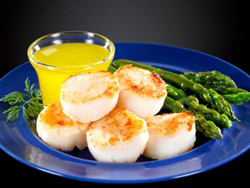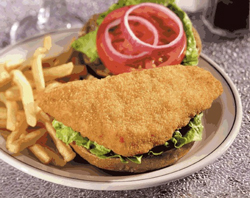In reporting a third quarter sales slide of $41.5 million to $241.2 million and a gross profit reduction of $4.3 million to $44.0 million, High Liner Foods also announced that 14% of its workforce has been made redundant as part of a realignment plan to cut costs and enhance efficiencies.
Adjusted EBITDA for the Luneburg, Nova Scotia, Canada-headquartered processor and marketer of value-added frozen seafood decreased by $3.1 million to $14.2 million during the 13-week period that ended on September 29, while net income fell $1.5 million to $4.5 million and diluted earnings per share decreased to $0.13 compared to $0.18.
 The company, which operates three packing plants and a number of warehousing facilities in Canada and the USA, provides retail and foodservice customers a wide line of products featuring over 30 species of seafood. Its offerings range from breaded and battered Atlantic and Pacific cod to haddock, flounder, pollock, catfish, hoki, scallops, shrimp, clams, crabs and more.
The company, which operates three packing plants and a number of warehousing facilities in Canada and the USA, provides retail and foodservice customers a wide line of products featuring over 30 species of seafood. Its offerings range from breaded and battered Atlantic and Pacific cod to haddock, flounder, pollock, catfish, hoki, scallops, shrimp, clams, crabs and more. High Liner President & CEO Rod Hepponstall“Our disappointing third quarter financial performance reflects challenges in both the external operating environment and our internal operations, and reinforces the need for action to realign the business and drive cost efficiencies,” said President and CEO Rod Hepponstall.
High Liner President & CEO Rod Hepponstall“Our disappointing third quarter financial performance reflects challenges in both the external operating environment and our internal operations, and reinforces the need for action to realign the business and drive cost efficiencies,” said President and CEO Rod Hepponstall.“We started this process in July, shortly after I joined the company, focusing first on our executive realignment, and have moved quickly to realign the rest of the organization,” added Hepponstall. “It has required some difficult decisions and we thank departing employees for their contributions to High Liner. We now have an integrated and appropriate structure that will enable us to execute on our plans to re-position the business so that we can unlock our true potential moving forward.”
The workforce reduction and full realignment is expected to result in approximately $7 million in net annualized run rate cost savings within the next 12 to 15 months, which gives the company reason to believe that it will achieve in excess of the previously disclosed $10 million net annualized run rate cost savings. There will be a one-time charge of approximately $4.5 million associated with the latest round of restructuring, $3.3 million of which will be recognized in the fourth quarter of 2018, with the remainder to be recognized in 2019.
“The good news is that demand for seafood continues to be strong and the company is well positioned to meet this demand because of its established market position, well known brands and seafood expertise,” said Hepponstall. “To capitalize on these opportunities, we must first set our business up for success. Over the next 12 to 15 months we will focus on critical initiatives that will ensure we have the most efficient supply chain, a simplified business with lower costs; the right talent in the right roles, a tighter integration with Rubicon Resources (the Culver City, California-headquartered shrimp supply unit acquired in May of 2017), and a stronger strategic marketing platform to grow consumer demand for seafood and our value-added offerings.”
 Realistic Outlook
Realistic OutlookHigh Liner, which trades on the Toronto Stock Exchange under the HLF symbol, has advised shareholders that until its critical initiatives are completed the company is likely to continue to face pressure on financial results. This is due to a number of factors including, among other things, internal challenges currently being addressed and rising raw material prices, compounded by recently imposed US import tariffs on key species. Longer term, High Liner expects its financial performance to improve and is targeting a return to profitable organic growth by 2020.
The company’s retail branded products are sold throughout the United States, Canada and Mexico under the High Liner, Fisher Boy, Mirabel, Sea Cuisine and C. Wirthy & Co. labels, and are available in most grocery and club stores. It sells branded products to restaurants and institutions under the High Liner, Icelandic Seafood and FPI labels and is the major supplier of private label value-added seafood products to North American food retailers and foodservice distributors.





